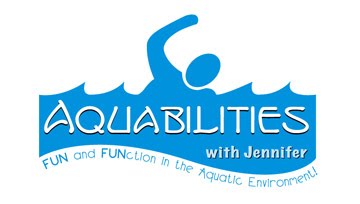Wednesday, August 3, 2011
Perfect Practice Makes Perfect
We've all heard the saying that practice makes perfect. During my 20+ years of teaching the art and science of swimming, I have come to realize that this saying is not entirely true. You will hear me say time and time again to my students that if you practice something in a sloppy way, you are going to learn it in a sloppy way. At Aquabilities, we are trying to instill in our students that perfect practice makes perfect.
It takes a lot less time to learn a skill if it is only practiced correctly from the start. Our swim program is designed to build on a strong foundation of head and body positioning in the water. This is why we focus on getting students comfortable with putting their face in the water from an early age. In front floating, if your face is down with proper alignment, your feet will go up with very little effort. With this basic principal in place, the arm strokes can focus on propulsion instead of keeping the body afloat. This will make swimming much more efficient.
This same principle holds true for back floating. We try to have our swimmers become comfortable with submerging their ears under the water. If you try to swim with your ears out of the water, you will have to kick extra hard to keep your feet up. This uses up a lot of energy in a stroke that is meant to be relaxing.
When the head is aligned properly with the body, the energy from the legs can be used for propulsion through the water instead of keeping the feet afloat. Kicking should be from the hip with a soft straight knee. Splashing should be minimal.
Now that the head is aligned with the body and the feet are kicking effectively, the arms can also efficiently aid in pulling the body through the water. I often tell my students to reach out as far as they can in front of them and pull the water towards their feet. The body will roll slightly on its side when reaching ahead allowing the stronger core muscles, such as the lats and pectorals, to activate and power the stroke. If no rolling occurs, mostly the weaker shoulder muscles will be used and you will not obtain optimal strength and speed.
I often tell my students to swim with "zero splashes" or swim as quiet as you can. Splashing does not perform any function in swimming. It only creates resistance, looks sloppy, and provides a greater chance for you and others to swallow water when inhaling.
Breathing proves to be the most challenging aspect of swimming. One of the biggest mistakes I hear parents say to their kids is "hold your breath!" Have you ever tried to hold your breath when you were exercising on the land? You would get tired very easily! Always exhale under the water so that when you are ready to take a breath, all you have to do is inhale.
Breathing at a rhythmic pace will also helps the body maintain its energy for swimming. You want to breath at a rate that is as close to what you would do outside the water. I usually breathe every 3-4 strokes. Less than 3 strokes and you may be hyperventilating and more than 4 strokes and you may not be getting enough oxygen to power the muscles.
For more information check out the following website for excellent videos and instruction on proper form and technique in swimming: www.swimsmooth.com
Happy (perfect) swimming!
Jennifer
Subscribe to:
Posts (Atom)

